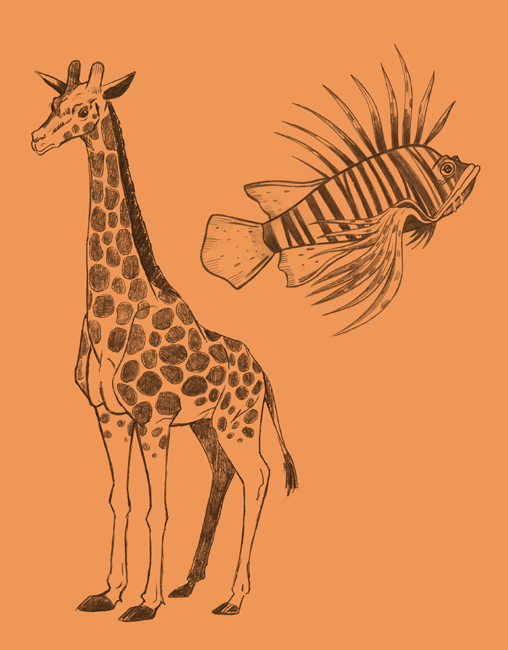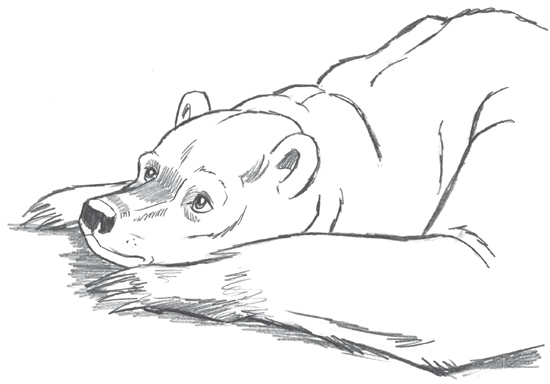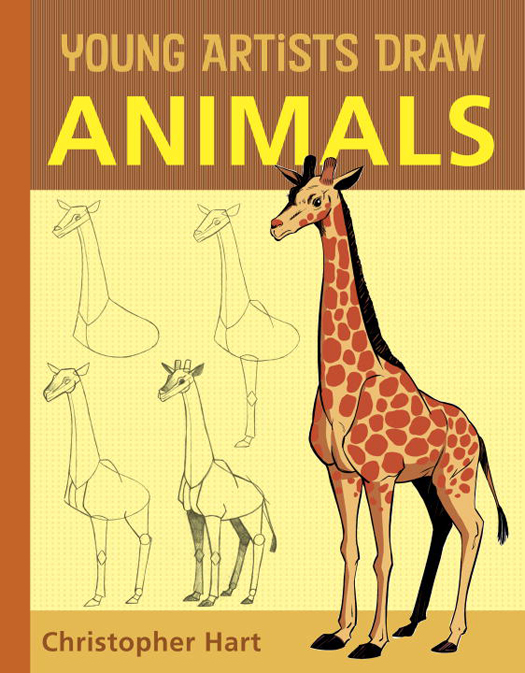
Copyright 2012 by Cartoon Craft LLC
All rights reserved.
Published in the United States by Watson-Guptill Publications, an imprint of the Crown Publishing Group, a division of Random House, Inc., New York
www.crownpublishing.com
www.watsonguptill.com
WATSON-GUPTILL and the WG and Horse designs are registered trademarks of Random House, Inc.
Library of Congress Cataloging-in-Publication Data
Hart, Christopher, 1957
Young artists draw animals / Christopher Hart 1st ed/
p. cm.
1. Animals in artJuvenile literature. 2. DrawingTechniqueJuvenile literature.
NC780.H263 2012
743.6
2011045546
eISBN: 978-0-8230-0719-6
Cover design by Jess Morphew
Cover art by Christopher Hart
v3.1

Dedicated to all aspiring artists everywhere!
your drawing pal,
Christopher Hart

Animals are fun to draw, but they can be challenging subjects. This book makes it both fun and easy to draw all sorts of creatures. Well start off with a brief, illustrated overview that highlights the important differences between human and animal anatomy. Then well dive into drawing a huge variety of popular animals.
Each animal in the book can be drawn from six easy-to-follow instructional steps based on shapes that anyone can duplicate. Little by little, youll add details to these shapes until the animal is complete. With clear instructions like these, youll be drawing animals faster than you ever thought possible.
Many peculiar creatures are in here, like the gecko, the anteater, and even the strange-looking, superpoisonous lionfish. Everyones favorite animals are still here in abundance, however, so youll also find examples of bears, horses, dogs, and cats! In addition, there are chapters on farm animals, reptiles, and even the largest animals of Africa.
Ill show you how to re-create classic animal poses in order to give your drawings maximum appeal. For example, an eager dog typically looks up at its owner with its tongue out and its tail wagging, a tiger slinks around stealthily, and so forth.
To begin having fun and learning new things, all you need is a pencil and some paper. So lets get started drawing animals from all over the world, from the chilly North Pole to the hot savannas of Africa!

You probably have a basic sense of human anatomy alreadyyou know where the shoulder is, as well as the elbow, the forehead, and so on. But when it comes to drawing animals, this anatomy changes. Sure, animals still have the same parts as we do, such as eyes, ears, noses, and mouths. But these features are positioned differently on animals heads and bodies, and they lie at different angles. Seeing how animals differ from us is the key to learning how to draw them. So, lets take a look at a few important differences.
Drawing details is fun, but professional artists generally begin with the larger, simpler shapes to create a foundation first. Once thats in place, they add the detailsand its still fun!

One of the first things an artist becomes aware of when drawing an animal is that the animal bodyespecially what we would regard as the arms and legsis configured quite differently from that of humans. The differences in the head shape may be a little subtler, which is why some beginners overlook them. In comparing the human head to an animal head, we notice that, other than the nose and the shape of the ears, everything else is built in pretty much the same way as it is with people. However, on closer inspection, well see that it is not so much the actual features of the head but where they are placedand in what proportionthat makes all the difference.
Notice that the forehead on most four-legged animals is small compared to the human forehead.
Humans have large foreheads. Thats because our brains are so big.

Because animals have small foreheads, their eyes are positioned near the top of the head. Humans, who have large foreheads, have eyes that are closer to the middle of the head.

To be good hunters, carnivores need extra-sharp vision that focuses straight ahead at their prey. Therefore, their eyes are spaced closely together. Do you know what other animal has eyes that are spaced closely together? Man.
Herbivores only eat plants. To avoid falling victim to hunters and carnivores, they must constantly be aware of their surroundings. Therefore, they possess superb peripheral vision that helps them see threats coming from all directions. To have highly developed peripheral vision, their eyes must be spaced widely apart on their head.
LiON
A predators eyes sit closely together and look straight ahead.

HORSE
An herbivores eyes are spaced widely apart, lie on a diagonal, and look off to the sides.
Notice how the eye sockets bulge outward in order to encircle and protect the widely placed eyes





















